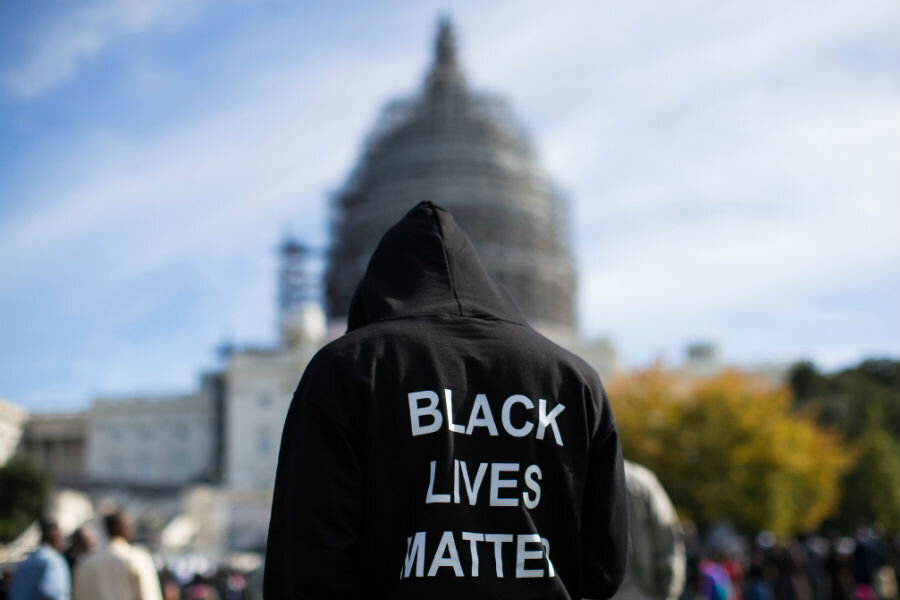Philadelphia teachers plan 'Black Lives Matter week': Does BLM belong in the classroom?
Loading...
Lessons on the Black Lives Matter movement will be incorporated into some – but not all – Philadelphia classrooms this week.
Teachers who choose to take part in the optional weeklong event to discuss and learn about the movement, developed by a local group of activist educators, are encouraged to introduce a range of activities and curriculum into their teaching. For example, organizers say, materials include "The Revolution Is Always Now" coloring pages for very young students, and science lessons about the biology of skin color for high schoolers.
Philadelphia's Black Lives Matter (BLM) week, while not mandatory nor sponsored by the school system, has become a point of controversy among local teachers and has renewed debate nationwide on how best to discuss race in the classroom, as the United States continues to grapple with questions of racial inequality. Educators and activists who support bringing BLM into lesson plans and classroom discussions say it provides students with an opportunity to learn about, and engage with, relevant social issues in a more thoughtful and informed way. But others argue that celebrating the movement in schools only teaches students one side of the story.
"This is a critical issue of our time – in our society, but also in our students' lives," said Charlie McGeehan, an English and history teacher and member of the Caucus of Working Educators, an activist group within the Philadelphia Federation of Teachers, to the Philadelphia Inquirer. "It's important for us to dive in."
Christopher Paslay, an English teacher at Philadelphia's Swenson Arts and Technology High School, disagrees. He told the Inquirer that while he supports equal rights and justice for all students, regardless of race, he feels the movement encourages divisions in society.
"It challenges nuclear families, and our justice system," Mr. Paslay said. "I don't think kids should be taught that Western society is perpetrating a war on black people."
The Philadelphia teachers are not the first to ignite debate over the place of Black Lives Matter in schools. In the 2014-15 school year, a group of teacher librarians in the San Francisco Unified School District created an online compilation of resources related to the movement for teachers to use in the classroom, including grand jury documents, poetry, videos and graphics, readings, and lesson plans and activities for students of all ages.
Last October, hundreds of educators in Seattle, Wash., wore Black Lives Matter shirts to school in a coordinated effort. Many of those teachers also taught lessons about institutional racism on that day, the blog "I Am An Educator" reports.
"This is a consciousness-raising event," wrote educators from Seattle's Washington Middle School and the group Social Equality Educators in an online FAQ. "School is part of society, students and staff are part of society, and so what is happening within our society deserves and demands our attention. This is a 'teachable moment' for the Seattle Public School community."
Opponents of such events say that educators cross a line by promoting controversial political stances that not all Americans agree with. But others argue that schools inherently shape and influence the perspectives of young people, no matter what the lesson content.
"Classrooms are never neutral sites. They are contested spaces, where the imbrications of competing interests wrestle daily for ethical real estate," writes David Kirkland, an associate professor of English and urban education at New York University, for The Huffington Post. "They have the power to move our assumptions away from the stale and negative deficit assumptions that strip away Black humanity and toward those complex narratives of people that build humanity and nurture sensitivities toward that humanity in ways that abolish pre-existing internal and external contracts of bigotry and violence."
Taking some time to discuss BLM protests and high-profile police shootings can be highly beneficial to improving students' understanding of the world around them, advocates say – and at a time when teenagers are increasingly plugged into social media and other online news sources, they argue that it's increasingly important for young people to have a healthy, safe outlet to discuss the videos they see on television or in their Facebook feed.
"They're reading it in their social media platforms, they're reading it on Facebook and Instagram and they're seeing what's happening," said Jinnie Spiegler, the director of curriculum for the Anti-Defamation League (ADL), to The Atlantic. "But they’re not having the opportunity to really talk about it, to read about it, to learn what actually happened and think critically about it."








